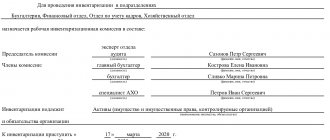Why is it required?
Due to the presence of a penalty, conditions are created under which it is economically unprofitable for participants in contractual relations to violate their obligations. With its help, an additional incentive is created for high-quality and quick fulfillment of the contractual terms of the agreement.
Expert opinion
Mikhailov Evgeniy Alexandrovich
Teacher of civil law. Lawyer with 20 years of experience
At its core, a penalty is an additional sanction for violation of obligations. It is additional because, in addition to it, there is also a main one - compensation for material and other losses. That is, the person who suffered as a result of failure to fulfill the terms of the contract can compensate for all losses incurred and receive benefits.
How to calculate the penalty
The amount of the contractual penalty as a percentage is indicated in the contract in the good will of all parties and can be anything (within reasonable limits). If the interest rate is not indicated at all, then it is automatically equal to the share of the discount rate of the Central Bank of the Russian Federation (a share of 1/300 is used for each day of delay).
The extent of the legal penalty is prescribed in the relevant regulations. For example, for timely unpaid alimony, the violator is required to pay an additional 0.1% of the debt amount for each missed day.
Calculation of the penalty is necessary if a percentage is applied rather than a fixed amount. In the second case, everything is clear - it is enough to multiply the number of violations by the amount specified in the contract. And to calculate the penalty, the following formula is used:
N = Amount × Days × %
where, N – penalty. Days – the number of calendar days on which obligations were violated. Amount – the amount of the obligation not fulfilled by the violator. % - the interest rate on the penalty specified by the agreement or legislative act.
Let’s say that the conditional Nikolai did not pay his ex-wife Alexandra alimony in the amount of 15,000 rubles. He was 32 days overdue on his payment. According to Article 115 of the Family Code, for each day of delay he must pay a penalty in the amount of 0.1% of the amount. Therefore, we consider what kind of penalty Nikolai has accumulated for himself:
N = 15,000 × 32 × 0.1% = 495 rubles
Consequently, our Nikolai will also have to reimburse the accrued interest for his violation.
In what form is it calculated?
Penalties are different. Often only a few are presented. This is necessary to make it convenient to enter into agreements. Sanctions are assessed in the following forms:
- A fixed amount or a fine.
- Percentage of unfulfilled obligation or penalty
- Increased pay.
In the case of a fine, the contract clause specifies the specific amount provided for violation of contractual terms. For example, 10,000 rubles for late delivery of products.
The penalty is calculated based on the amount of obligations not fulfilled by the violator. For example, 1% for each day of delay in making a monthly loan payment.
In some situations, the price of a service or product increases for the client. For example, if a package is not received on time, a person will have to pay more money for storing it in a warehouse.
It is important to understand! A penalty is precisely a punishment for violating established contractual obligations. It should not be confused, for example, with a credit rate. The last one is a fee for using banking services. And if the loan is overdue, interest will continue to accrue. Separately, the person will have to pay a penalty.
Changing the amount of legal penalties
According to paragraph 2 of Art. 332 of the Civil Code of the Russian Federation, the amount of the penalty established by law may be increased by agreement of the parties, if there is no prohibition on this. The Plenum of the Supreme Court of the Russian Federation in Resolution No. 7 explains that, despite the absence of instructions on this in the Civil Code of the Russian Federation, the legal penalty for failure to comply with the terms of the contract cannot be reduced at the will of the parties to the transaction (clause 61).
In addition, Resolution No. 7 provides a special case when increasing the legal penalty is impossible.
An increase in the statutory penalty is not allowed in relation to the sanctions provided for in Part 14 of Art. 155 of the Housing Code of the Russian Federation for late or incomplete payment of utilities. Judicial practice is formed on these clarifications (for example, the ruling of the Supreme Court of the Russian Federation dated October 12, 2017 in case No. 305-ES17-10359, A40-51128/2016).
In addition, paragraph 62 of Resolution No. 7 specifies that if the basic obligation is violated, then the obligation to pay a legal penalty can be fulfilled:
- providing compensation (Article 409 of the Civil Code of the Russian Federation);
- novation (Article 414 of the Civil Code of the Russian Federation);
- debt forgiveness (Article 415 of the Civil Code of the Russian Federation).
In this case, the method of terminating the obligation to pay the penalty may also be determined in the settlement agreement.
The penalty determined at the legislative level can be reduced by the court in accordance with the provisions of Art. 333 of the Civil Code of the Russian Federation (clause 78 of Resolution No. 7), that is, in cases where the amount to be paid clearly does not correspond to the principle of reasonableness.
Days of delay
To correctly calculate the penalty, you need to understand when the delay begins. If the contract specifies a date for fulfillment of obligations, then the delay is valid from the next day.
Sometimes it happens that a specific number of calendar or working days is given for contractual obligations to be fulfilled. Therefore, you need to complete them until a specific date. After this day there will be a delay.
This is important to know: Consideration of a case of an administrative offense: deadlines, procedure and features
But the parties often do not set specific payment deadlines, loan repayment, etc. Then the legislation proposes an appropriate scheme of action. Thus, the counterparty must send a request in writing to perform the actions provided for in the contract. Such a proposal must be considered and implemented within 7 days from the date of receipt under Article 314 of the Civil Code of the Russian Federation. Accordingly, the next day there will be a delay.
Expert opinion
Mikhailov Evgeniy Alexandrovich
Teacher of civil law. Lawyer with 20 years of experience
The delay ends when the person finally fulfills his obligations. In this case, overdue days also include weekends and holidays.
Collection of penalties under the contract
Claiming a penalty is possible both voluntarily and in court. In practice, this measure of liability is applied, as a rule, through the courts.
In this case, the plaintiff must attach to the statement of claim a document calculating the penalty required from the defendant. The period for which the calculation should be made is determined as follows:
- Within the meaning of Art. 330 of the Civil Code of the Russian Federation and in accordance with the explanations from Resolution No. 7 (clause 65), the plaintiff’s side is entitled to demand the award of a penalty right up to the day of actual fulfillment of obligations, that is, for example, until the day of actual payment for the goods. Meanwhile, the law or agreement of the parties may define a shorter period for calculating the penalty, or its total amount may be limited.
- If upon completion of the contractual relationship the primary obligation ends, the penalty is calculated for the period until the termination of the obligation (clause 4 of Article 329 of the Civil Code of the Russian Federation).
- If upon termination of the contract the basic obligation is not terminated, you can demand not only the payments specified in the contractual document, but also a penalty for their untimely payment (Articles 622, 689 of the Civil Code of the Russian Federation).
The operative part of the court decision indicates the total amount of the penalty calculated at the time the decision was made. Subsequently, after the decision enters into legal force, the amount of the penalty is collected as part of the enforcement procedure by the bailiff.
Formula for calculating contractual penalties
In the case of a fine, it can be paid as a fixed amount or a certain percentage. The magnitude of the sanction can be presented at the legislative or commercial level.
Depending on the terms of the contract, the basis for calculating the penalty is the total amount of work, products or services, or the amount of debt.
The penalty is calculated using the standard formula: debt * (percent/100) * number of overdue days.
It is worth pointing out that some monetary sanctions are tied to the key rate of the Central Bank (in the case of bank debts). Therefore, if during the delay the Central Bank rate changed several times, then all the rate figures are summed up.
Often the penalty is set as an annual percentage. Then the figure 360 is added to the above formula: debt * (percent/360/100) * number of days overdue.
Important! When performing calculations, first calculate the indicator in brackets.
Contractual penalty
Depending on the agreement, the obligation to pay fines may be assigned to several parties. Below we will reveal common cases of collecting sanctions based on documents.
Sales and purchases
Here, the seller may be subject to a fine for failure to timely organize the transfer of goods to another person. The recipient may pay a penalty for late payment for the goods.
Supplies
Delivery is a direct type of purchase and sale document. Therefore, in this case, the punishment rules described above sometimes apply. The only global difference in this document is that the goods can be transferred to the buyer partially or in batches. For this reason, a penalty may be assigned for each subsequent delivery of goods.
This is important to know: How to open an individual entrepreneur: what documents are needed, step-by-step instructions
Contract
The penalty can be imposed on both the contractor and the customer. The customer may, under contractual terms, receive a sanction for late payment of work performed by the contractors. Performers may receive sanctions for late completion of work. For this purpose, specific terms are specified in the contract.
Loan
A penalty may be provided along with a percentage charge for the use of funds provided to the debtor. But in any situation, a penalty or fine is specified in the agreement.
Equity participation
Sanctions for late delivery of housing are prescribed at the legislative level. For each day of delay, the base amount is equal to 1/300 of the rate for each day of delay.
Amount of penalty for failure to fulfill the terms of the contract
The amount of a legal penalty is determined in legislative acts. If the amount of the penalty for failure to fulfill obligations under the contract is not established by regulation, the parties to the transaction have the right to assign it independently.
IMPORTANT! In accordance with Art. 331 of the Civil Code of the Russian Federation, an agreement on a penalty must be drawn up in writing.
Based on the explanations given in paragraph 63 of Resolution No. 7, a written document on the penalty must comply with the requirements listed in paragraphs. 2, 3 tbsp. 434 Civil Code of the Russian Federation. If an agreement on a basic obligation is declared invalid, this implies the invalidity of an agreement on a penalty or fine (clause 64 of Resolution No. 7).
However, if an agreement on a penalty is concluded, in which it is determined that it is paid in the event of failure to fulfill obligations to return the property, due to the invalidity of the transaction, then the invalidity or non-conclusion of the main contractual document does not entail the invalidity of the conditions on the penalty (paragraph 2, paragraph 64).
In practice, the type, amount and procedure for claiming a penalty are agreed upon directly in the agreement. The amount of the penalty is established as a percentage of the amount of the obligation. There are no legal restrictions on the percentage of penalties for failure to fulfill obligations under the contract.
Explanations from experts on various aspects of the application of penalties can be found in ConsultantPlus. For example, the answer to the question whether the amount of the penalty for violation by the parties of their obligations under the contract may exceed the amount of the principal debt. If you don't already have legal access, a full access trial is available for free.
The procedure for recovery for violation of work deadlines
If the contractor violated the deadlines for completing the work, then he must pay the consumer a penalty for late completion of the work in the amount of 3 percent of the price of the work for each day (or hour when the work is hourly).
When the cost is not specified in the contract, they are guided by the price of the entire order. This size can be increased by the parties by agreement. If the contractor violated the deadline for starting work, then the amount will be accrued until he starts work or the consumer applies appropriate measures to him (he completes the work himself, sets a new deadline, etc.). The same applies to the case when the contractor does not complete the work on time.
Initially, the contractor is presented with a claim. If it is ignored or non-fulfilled or refused to be executed, a statement of claim is prepared in court.
Accrual period
The penalty begins to accrue from the moment the delay begins, that is, from the next day after the day on which the obligation under the contract should have been fulfilled. The moment of determining the end of the collection period raises many questions; it all depends on the legal relations that have developed between the parties. As a general rule, a penalty is accrued until the full fulfillment of obligations under the contract by the person who violated the terms of the agreement, regardless of the moment of termination of the agreement.
If it is determined at the legislative level or separately agreed upon by the parties that the sanction is collected from the moment of termination of the agreement or contract, the penalty is collected until this moment. Plenum of the Supreme Court No. 7 of March 24, 2016 connects the moment of termination of collection with the moment of termination of the main obligation under the contract.
If, for example, the parties have agreed that their contractual obligations will cease entirely upon expiration of the contract, the penalty will be calculated on the day that is the expiration date of the agreement. Judicial practice (Resolution of the Presidium of the Supreme Arbitration Court of the Russian Federation in case No. 8171/13, which was adopted on November 12, 2013) indicates that termination of obligations to return the penalty accrued under the contract is also possible through compensation, novation or debt forgiveness.
Calculation by refinancing rate
The key rate of the Central Bank as of March 1, 2021 is 7.75%. You can find up-to-date information on the current key rate on the Central Bank website or here. If the key rate has changed during the delay in payment, interest is calculated for each period separately.
The key rate is annual, but to calculate late payment it is more convenient to use a period in days. Therefore, to obtain the penalty rate in days, the refinancing rate should be divided by 360, which follows from law enforcement practice. Taking this into account, the formula for calculating late payment interest will be as follows:
How to draw up a claim and submit it to court
Rules for filing a claim for a penalty:
- it is necessary to calculate the amount of the sanction;
- if there is a condition on a mandatory preliminary claim procedure, fulfill it;
- Having received a refusal or not receiving a response, go to court in compliance with the rules of jurisdiction and jurisdiction;
- To do this, it is necessary to formulate a statement of claim in accordance with the requirements of the relevant procedural regulatory documents, pay the state fee and collect the evidence base.
What is needed to collect a penalty through court?
To demand payment of sanctions through the court, you need to prepare the relevant documents and consult with a lawyer in order to correctly draw up a claim . But you can do this yourself. Although in this case the chance of refusal or reduction of the penalty increases.
Direction of claim
Before going directly to court, it is very advisable to draw up a pre-trial claim and send it to the offender to resolve the conflict voluntarily. This indicates the plaintiff’s good faith and, in turn, the defendant’s reluctance to make contact. We recommend using samples when writing a document to avoid making mistakes.
In the claim, among other things, it is necessary to calculate the penalty and indicate the final amount you want to receive.
The claim must be sent by registered mail with a list of attachments or delivered in person. In this case, you must make a copy of the complaint and have the potential defendant date the document and sign on it to indicate that he has accepted the document. You must keep a copy for yourself.
14 days are given to consider the pre-trial claim. If during this period the violator of the contract has not responded to the claim or refused your demands, then you can go to court.
Where to file a claim
According to the general rules, it is necessary to file a claim in court at the location of the defendant. That is, to the institution to which the residence address of the violator or the legal address of the company that violated the obligation belongs.
If the agreement was concluded between two individuals, then the statement of claim must be filed in the magistrates or district court.
In the event that an agreement was concluded with any enterprise or firm, and it was this company that acted as the violator of the obligations, then the claim must be filed in the arbitration court.
Statement of claim and attachments thereto
When drawing up a statement of claim, you can use various forms that are already posted online. They will help you figure out what and how to write. The content of the claim approximately corresponds to the content of the pre-trial claim. But it must also indicate:
- name of the court;
- Full name, registration address and contact telephone number of the plaintiff;
- Full name, registration address and contact telephone number of the defendant (or name if it is a company);
- the amount of the penalty as of the date of filing the claim;
- the essence of the requirements (payment of penalties, compensation for damage, and so on).
Documents must be attached to the statement of claim. At the end of the application itself, you must indicate the composition of the package of documents. What should it contain:
- Receipt for payment of duty.
- Calculation of the amount to be recovered, indicating where the figures came from.
- A copy of the claim with attachments.
After this, the claim is sent by registered mail with a list of attachments. Or brought in person to the court office. In this case, you must ask the receiving party to put a mark on acceptance of the claim on the copy as well.
Reasons for reducing the rate
In accordance with Article No. 333 of the Civil Code of the Russian Federation, the rate can be reduced in court if:
- The interest rate is too high.
- The penalty significantly exceeds the amount of losses.
- Obligations were not fulfilled for a long time.
- The principal amount of the debt was returned voluntarily.
- The debtor went bankrupt (rarely).
In addition, as practice shows, courts can take into account such points as:
- bad faith of the creditor;
- financial situation of the debtor , presence of dependents.
Contract or participation in shared construction
The contractor of construction or repair work is obliged to deliver the order within the time limits established by the contract or additional agreement of the parties. Violation of this clause of the deal also entails certain consequences for the contractor.
If the customer is a citizen, failure to meet deadlines for completing construction or correcting deficiencies in the work is regulated by the Law “On the Protection of Consumer Rights.” According to paragraph 5 of Article 28, the amount of the daily penalty will be equal to 3% of the cost of the entire order or a separate stage of work.
If the contract for the provision of services contains other amounts of the penalty, the calculation of monetary compensation is carried out using the available data.
The share participation agreement also implies the delivery of the object within the time period established in the agreement. Penalties are calculated for each day of delay taking into account the provisions of Federal Law No. 214 of December 30, 2004. In this case, the interest rate used in the standard formula is calculated as follows:
(1/300 of the Central Bank refinancing rate / 100%).
It is worth noting that the amount of penalties and interest accrued should not exceed the cost of the entire order or purchase.
Is it possible to reduce the penalty?
Too high a contractual penalty in relation to obligations may be a reason to reduce it . You can reduce it in accordance with Article 333 of the Civil Code of the Russian Federation if the amount is inadequate to the damage. For example, it is useless to indicate in a loan agreement for a neighbor 500 rubles a fine of 2,500 rubles for failure to repay on time or a penalty of 5% per day - they, naturally, will be recognized in court as inadequate and will be reduced to a minimum.
But only on the condition that the neighbor is outraged by such a penalty and petitions for its reduction . Without a motion from the defendant, the court will not determine how large the sanctions are.
The presence of a petition does not mean that the court recognizes the penalty as not corresponding to the size of the violation and will necessarily reduce it. When analyzing its size, he will look at several parameters of the case, including the amount, term and other circumstances. And the smaller the penalty in relation to the amount of the obligation, the lower the chance that it will be reduced.
To increase the likelihood of reducing the amount, the debtor can refer to some arguments that justify it or make the plaintiff’s benefit noticeable:
- short period of delay;
- the plaintiff’s guilt (if any);
- too high a percentage in relation to the share of the Central Bank of the Russian Federation rate;
- no losses for the plaintiff;
- the presence of valid reasons (for example, force majeure);
- increased amount of the penalty in relation to contracts on similar terms;
- the amount of sanctions is already approaching the size of the main obligation, or even exceeded it;
- the obligation is not expressed in money;
- the parties' liability is unbalanced - the defendant is in worse conditions than the plaintiff.
But even with the combination of all these factors, the court may side with the plaintiff. Therefore, we recommend talking to a lawyer about reducing penalties in order to find the most profitable strategy.







